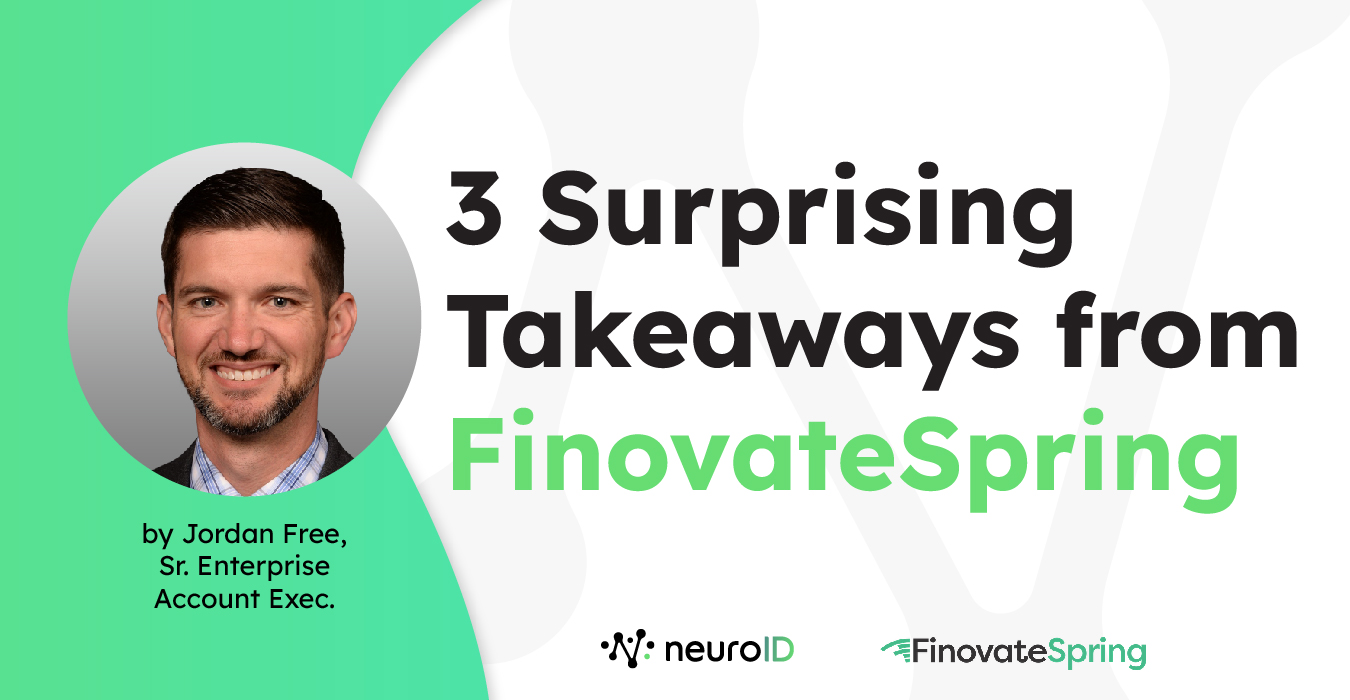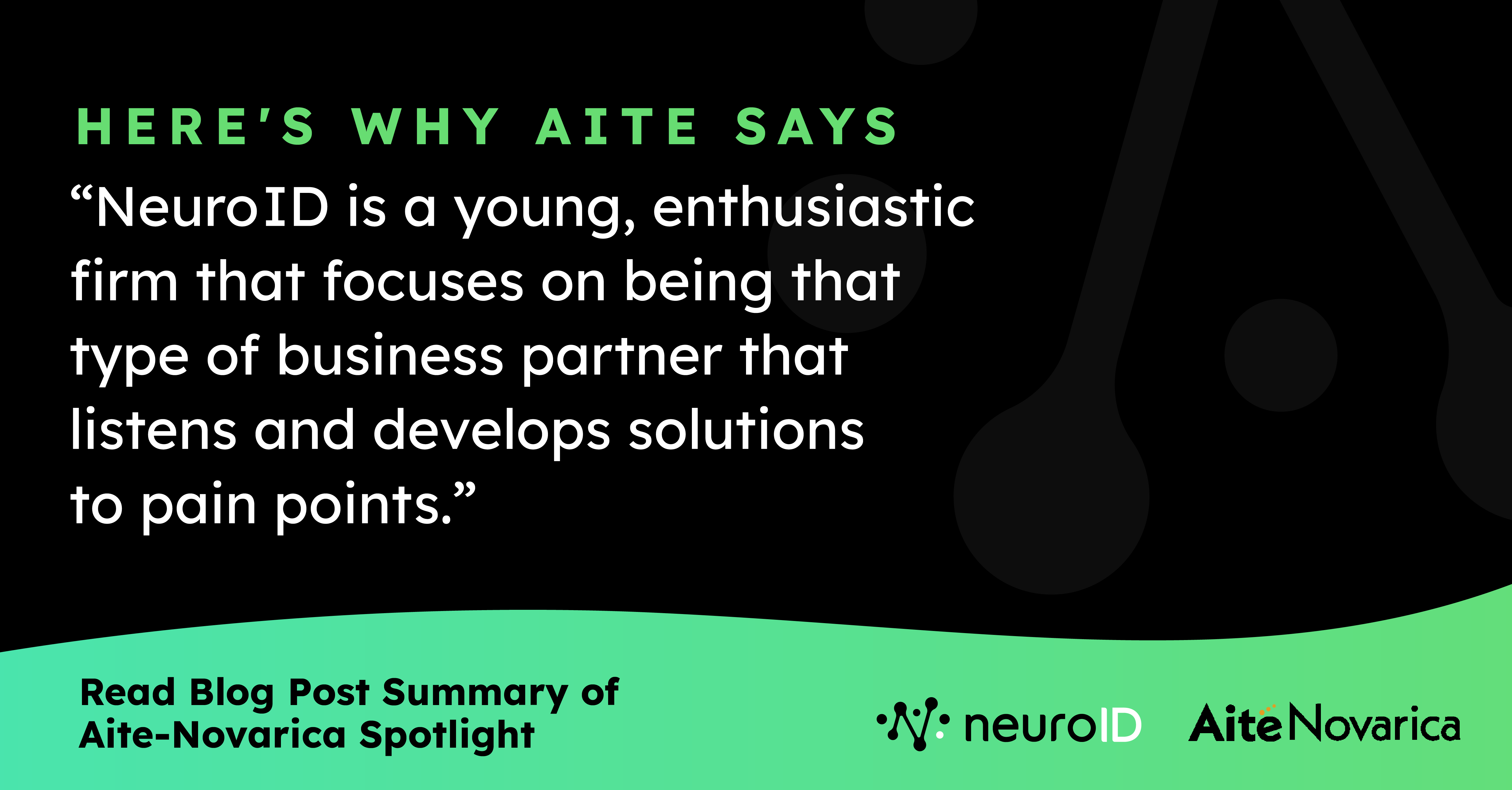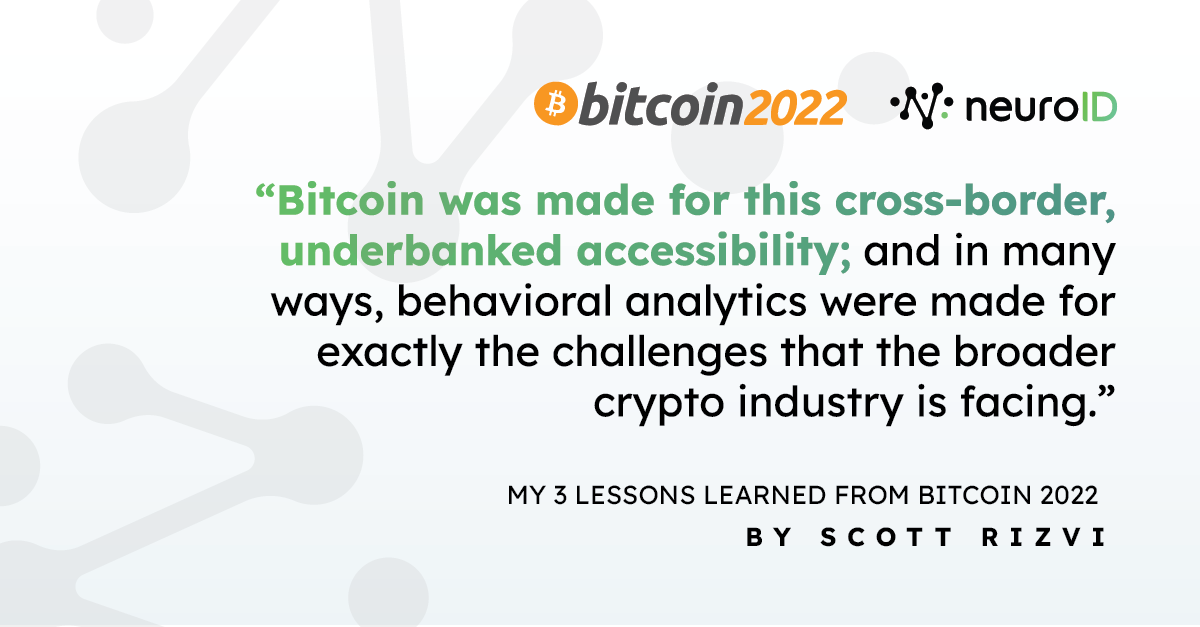
3 Signs from Finovate that the Fintech Script has Flipped
It’s been about two weeks since the NeuroID team and I got back from FinovateSpring, and I’m still thinking about the discussions I had and lessons I learned. It was one of the most purpose-driven events I’ve ever been to, with professionals who are truly pushing the industry to the next-stage of financial services.
The themes I keep coming back to are “change” and “creativity.” My NeuroID colleagues and I saw those both on high display throughout the event and in conversations we had with attendees. The industry is changing, and creative problem-solving is a must. At the same time, fraudsters are getting creative and a change to traditional fraud approaches are vital to growth. And then again, we see creative new banks emerging and changing the rules of the industry.
I left with a lot to think about, but here are the top three I keep coming back to:
1. Neobanks ≠ New Kids in Town
Us fintech folks love talking about “new trends” and “bucking old trends.” But we sometimes forget that a “trend” is defined as come-and-go: Neobanks are no trend. They’re now established ways of banking. While there are many think pieces (including some of our own) about how COVID accelerated the Digital Transformation, the only reason that acceleration worked was because consumers were ready for it. And they don’t want to go back.
I have heard neobanks be called the “ankle-biters” of banking, but they’re full-on competitive growth machines now. Especially when it comes to meeting the demands of younger generations, who are nearly 3x as likely as baby boomers to say that they “run their life from their mobile devices.”
We’ve seen that in our own customer ecosystem too, where NeuroID supports challenger banks’ growth as we as traditional banks who are just transitioning into the digital world. Neobanks are gaining foothold while traditional banks look for the next steps, and both these stages require secure and seamless growth through fraud prevention that doesn’t impact the customer experience. Speaking of which . . .
It was heartening to hear how cognizant the insurance world is about the impact of data, privacy, and AI capabilities. As with many industries, new automation leads to new concerns, as well as growing questions around what data to use, how to manage data privacy and sharing regulations, and the best ways to make unbiased decisions based on the data at hand.
2. Better Customer Experience is in High Demand
No matter if you’re brick-and-mortar or ones-and-zeros, success today is all about the customer experience. And in the digital world, accurate identity verification is embedded into every level of customer experience. It’s there at onboarding, where a friction-full process can cause frustration or abandonment. And it’s there once a customer is in your ecosystem, where they expect a reasonable level of protection from fraudsters.
I’ve talked to banks who are still struggling to build their digital approach and still rely on manual processes to verify customer identities at onboarding. This is, of course, expensive, inefficient to scale, and notoriously error-prone, while causing high rates of digital onboarding abandonment. But at the same time, if they don’t establish strong identity verification barriers, they run the risk of not just expensive fraud losses but costly damage to brand reputation.
It’s that digital-age balance that’s more important than ever today: how do you provide an exceptional customer experience while keeping fraud at bay?
I talked to quite a few attendees at FinovateSpring who were struggling to answer that question. If you were one of them, here’s a good read on how “smart friction” can help shed some light on new answers to this age-old question.
3. Digital Beats Out ALL Other Differentiators
I talked to many legacy bank professionals who said that the competitive advantages they once hung their hats on—name brand, rates, etc.—are now nearly worthless. Challenger banks can offer the same rates and a digital experience that customers can own on their terms.
We heard it over and over again: when it comes down to it, the digital experience matters more than anything else. Which is why the industry is struggling with fraud prevention providers who provide customer-experience-killing bells and whistles for a fortification that’s both friction-filled and overkill. That “change” and “creative” mindset is key here, as every bank tries to find innovative ways to stay ahead of both fraud and their competitors.
It’s a lot less intimidating to unlock both fraud prevention and customer experience at the same time—and that’s also the best way to stand out from the crowd. NeuroID’s unique approach to friction and fraud caught a lot of attention at FinovateSpring: we highlight risky and genuine folks, so you can fast-track or up-friction accordingly (if that sounds interesting, let us show you how it works).



